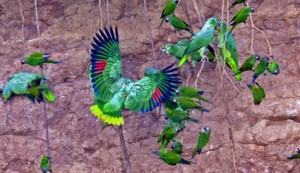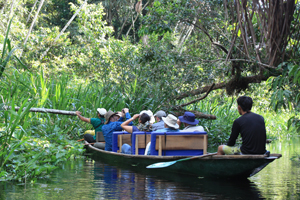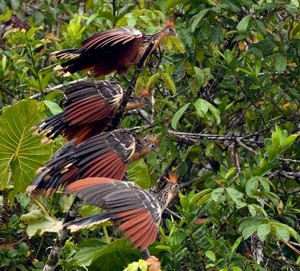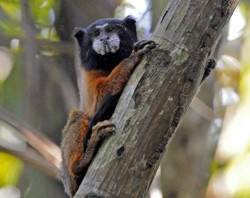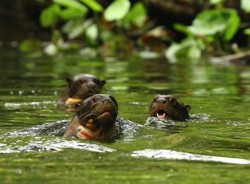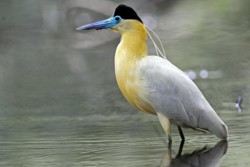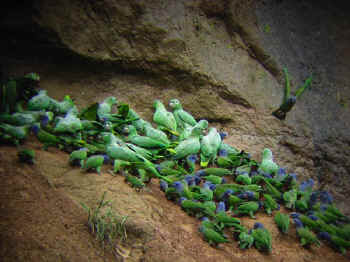ABOUT THE NAPO WILDLIFE CENTER
TRAILS & ACTIVITIES - in
their own words:
(Note: rain ponchos and boots are provided when needed for excursions, in
standard sizes)
The Napo Trail cuts
from the Napo River to Anangu Lake, just across from the Lodge, and can be used
as an alternative to Añangu stream as an entrance to pathway, yet the experience
is very different. The trail, which takes you to the canopy tower, is rather
flat terra firme forest, which makes it easy to walk on.
The Community Trail
runs along or parallel to the Napo River, where the Añangu Kichwa community is
located. It is not deep jungle, more riverine second growth (as opposed to
primary forest) giving you the opportunity to see a different side of the
diversity of habitats and wildlife in the Amazon Basin.
The Tiputini
Trail
is probably the wildest of
them all. If you walk long enough on it, you will see the most variety in terms
of habitats, with seemingly limitless terra firme and swampy
Canopy Tower
Only
35 minutes away from the lodge is the best and most professional canopy
tower ever built in the Ecuadorian Amazon. You can climb the 130-foot high canopy tower
standing right next to a giant 155 Kapok tree with an ample platform
provides space for 15 guests, providing for fabulous views
over the canopy. It is possible to spot troupes of howler, capuchins, monk
sakis or spider monkeys in the nearest forest. Active feeding bird flocks reach this area
- 80 species were sighted in one single morning. Bring your binoculars,
camera and telephoto lenses, set up a telescope: this is a spectacular
scenic opportunity. Not to be missed.
Birdwatching
Over 562 species of birds have been recorded at Napo
Wildlife Center, more than 1/3 of all of Ecuador's species.Agami and ZigZag herons are
found near the lake and creeks, including all five kingfishers. THe large raptors like
Harpy and Crested Eagles find healthy mammal food around the area. The active calls of
forest floor mixed species flocks with the largest number of the surprising antbirds can
be found. Canopy flocks are normal to run into, helped with the expertise of the top
native birdguide along the entire Napo: Jiovanny Rivadeneira.
The
Anangu Community
Anangu is not only home to the NWC lodge. It has been the ancestral territory of a Quichua
indigenous community that has the same name. Anangu pople are active participants of the
conservation and management of a large territory within the park as well as the lodge's
partners in tourism. You can join some families on their daily activities when
harvesting bananas, coco and manioc, or maybe help prepare chicha, a traditional drink
based on cooked and fermenting manioc.
River Islands
A phenomenon of fast-flowing rivers, unique to the Amazon, Napo River Islands
are created by silt and fallen trees washed downstream during rainstorms in the
Andes. If enough material builds up an island is formed (sometime even over
night). Depending on the age of a given island, different colonizing plant
species dominate, from grasses and shrubs to the point where the islands can
support a forest. These islands support some animal species that can be found
nowhere else. They are a fascinating addition to Amazonia’s peculiarities and
can be visited if you so wish to do so.


